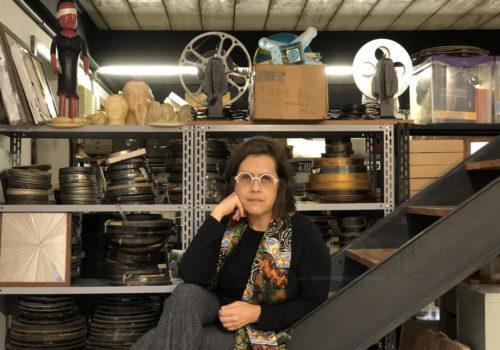The most imposing monument in Breda is the Grote Kerk. Built in Brabant Gothic style between 1410-1547, it is an exceptional structure that has now been integrated as a venue in BredaPhoto for three editions. So, one might remember the exhibition Space to Breathe by Newsha Tavakolian during edition 2022.
This year, the church was assigned to Rosangela Renno (1962). She was awarded Kering’s Women in Motion prize at last year’s festival in Arles. As such, she joins the list of great photographers as Susan Meiselas (2019), Sabine Weiss (2020), Liz Johnson Artur (2021) & Babette Mangolte (2022), she had realised the exhibition ‘On the ruins of photography ’ at La Mécanique générale in Arles. Only, in sensu stricto. she is not really a photographer.
Renno is strongly influenced by the semiological thinking of Roland Barthes, among others (La Chambre Claire in particular). Here she broadens Barthes’ notion of “the photographic image as a living organism” to “history as a living organism”. She focuses mainly on appropriated images that she gathers from flea markets and archives. Her aim as an artist is ‘to denounce the system that tries to erase or manipulate links with the past’, or simply not show them when it comes to women, slavery or colonialism. Archives that reflect power and dominant thinking, are instruments of oppression.
The exhibition Encounters / Encontros is the meeting between the artist and the public, between the Netherlands and her homeland Brazil. It is a grand total experience between the space of the monument and an installation that occupies the entire church. The Resistance of Breda of Las Lapidas (2024) is the all-encompassing décor in which Renno shows a series of different works. The Resistance/ Las Lapidas refers to the parallel history of Breda and of the Pernambuco region in the early 17th century: when Breda was alternately ruled by Spain and by the Netherlands, Pernambuco alternately by the Portuguese/Spanish colonials and the Dutch West India Company. She alters the sensory perception with which we enter the space, making us perceive the tombstones as photographic images.
She adds Living Things (2024), a series of images of pillories that recall the oppression of coloured people in Brazil, Mutadis Mutandis (2024) that links to the colonisation of thought and popular religion, Colonial Crime Cabinet (2024) on how an image can take on different interpretations according to the viewer, Universal Archive (1992-…) with significant text fragments from her archive. The final addition to the project is the film Vera Cruz (2000) featuring the account of Pêro Vaz de Caminha written during the conquest of Brazil by Pedro Álvares Cabral in 1500 – how this account deals with ‘conquest’ and not ‘destruction’.
Renno’s presence at this festival marks an important evolution in BredaPhoto’s programming – until this edition, conceptual artists were sometimes invited, but this move really marks a statement by the organisers.
One piece of advice, it is recommended that you use the online app when visiting.
Conclusion: Renno achieved a cerebral installation that can act as leverage in a social debate.
De Grote Kerk, Kerkplein 2, Breda
Tuesday – Sunday: 10:00 to 17:00 hours
For this location you need a BredaPhoto ticket.
Shop, Toilets, Ticket office
This location is accessible for people with in a wheelchair, and is located in a traffic-free zone
John Devos
[email protected]
















